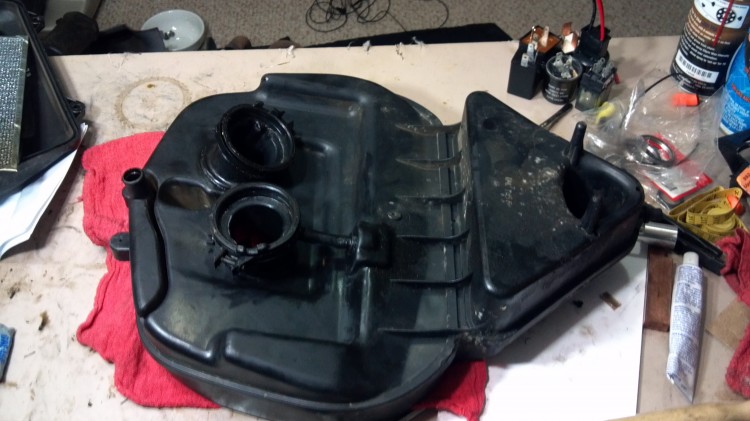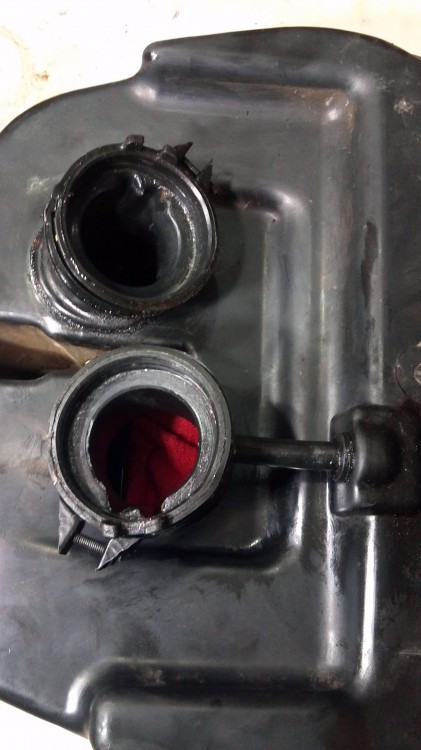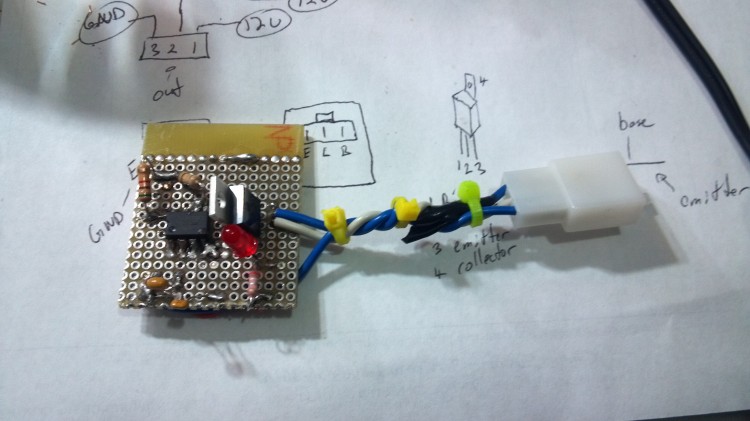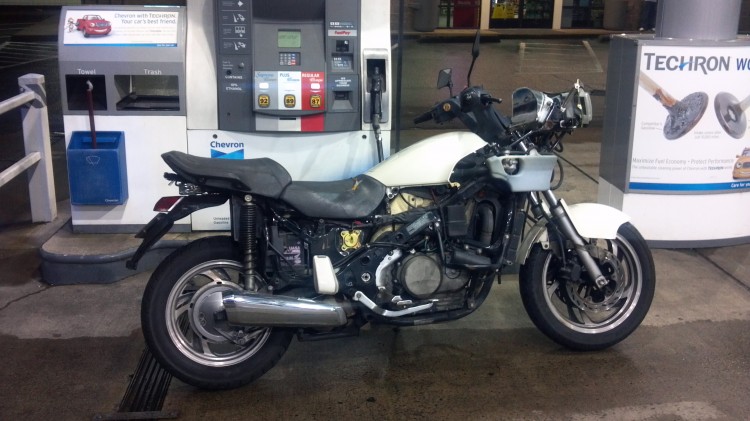
About a month ago a fourth motorcycle joined my Japanese Iron stables. The fabled “Nekked PC,” a PC800 that had been stripped of almost all of its plastics and ratted out, had come up for sale on the IPCRC. An email exchange with the original owner of this 1989 Honda PC800 Pacific Coast followed. The owner was nice enough to trailer this bike up from California to Corvallis in exchange for a very reasonable amount of money. And thus the Nekked PC became mine for the purpose of finishing the fuel injection conversion project that I have been slowly completing over the last year.
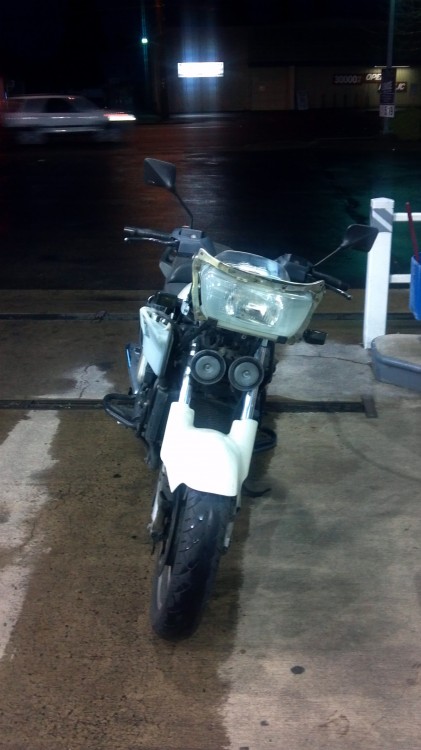
As you can see, over 100 lbs of plastics have been stripped from the bike. The bike takes on an entirely new handling characteristic without all of the extra mass and wind resistance. It has taken some getting used to in order to anticipate what the bike will do.
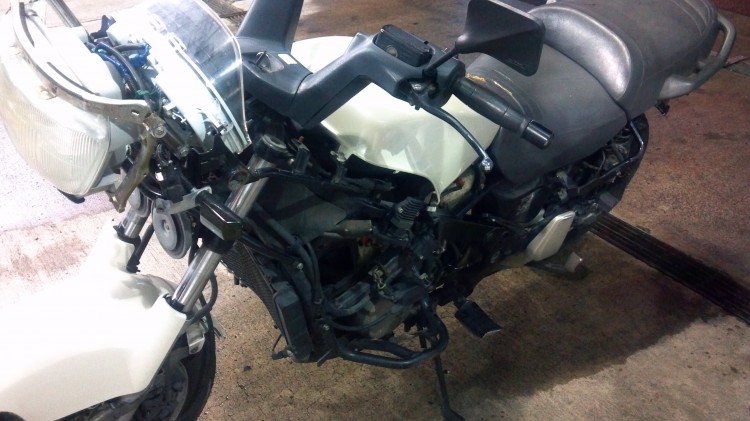
The original headlight and instrument cluster remained on the bike. This gives it a strange, raked-out look that I kind of like. I am considering cannibalizing the headlight housing in order to build an HID projector and angel eye effect into the stock housing on my other PC800, The TARDIS.
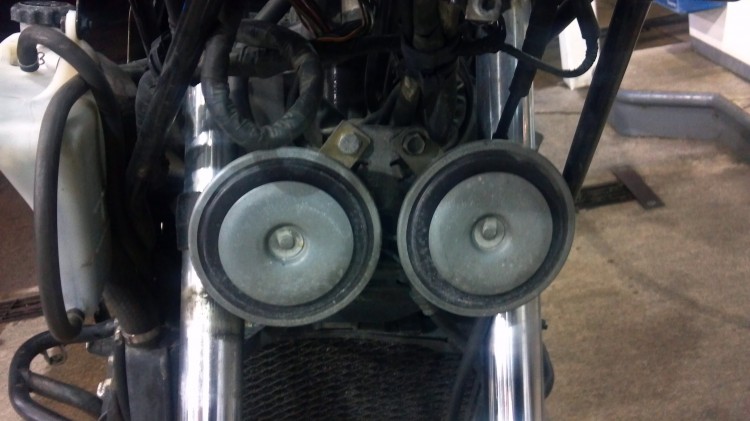
Yes, those are two Mercedes car horns. They would never fit under the plastic of a fully plasticized PC800 and they rub on the shocks but they work very well. It is a nice after-market touch.
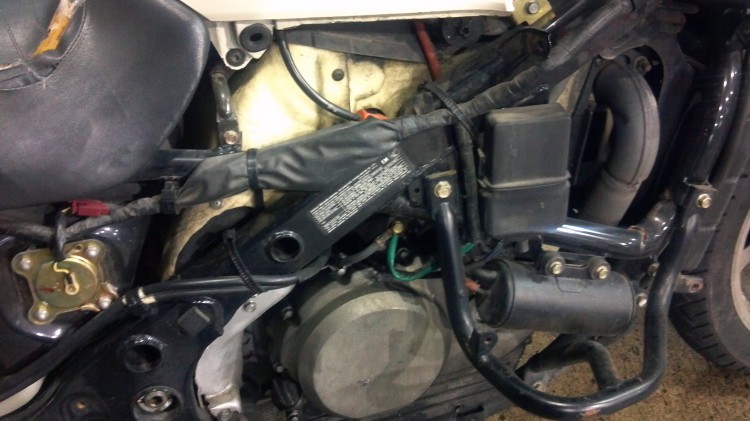
With all of the harnesses exposed, this is a bike meant for fair weather. Also note that this is a California model and has the emissions control equipment intact and fully functional.
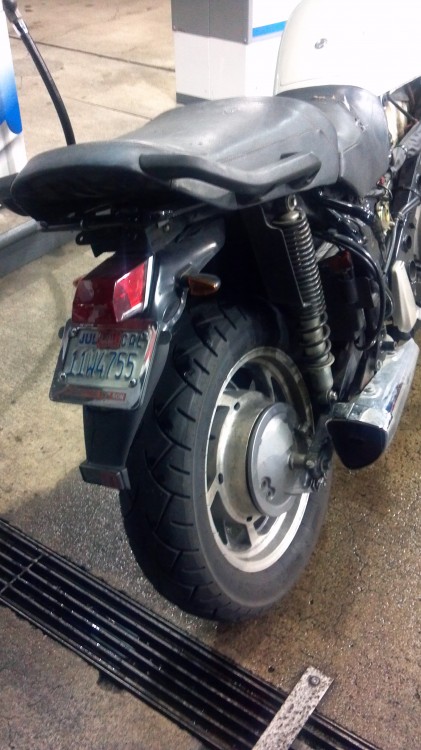
The rear fender is from a dirt bike.
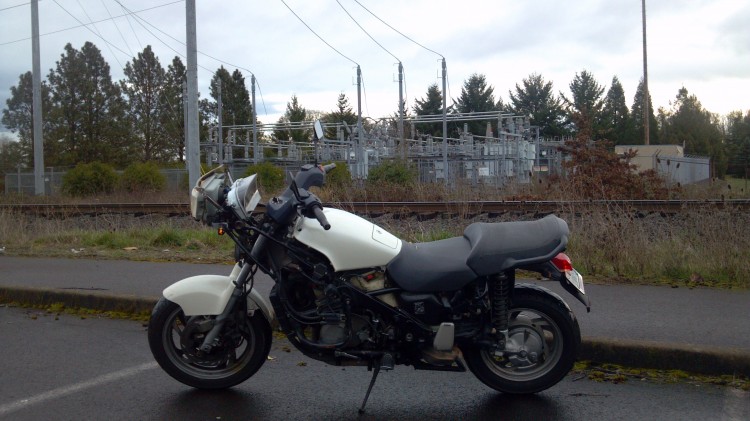
This is from just after I got the license plate for the bike.
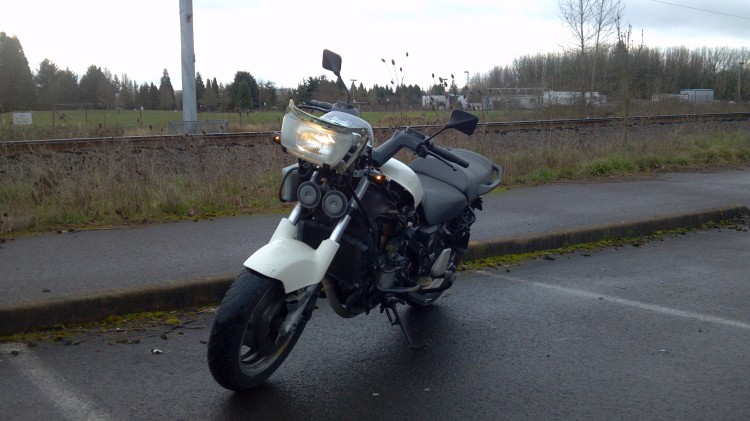
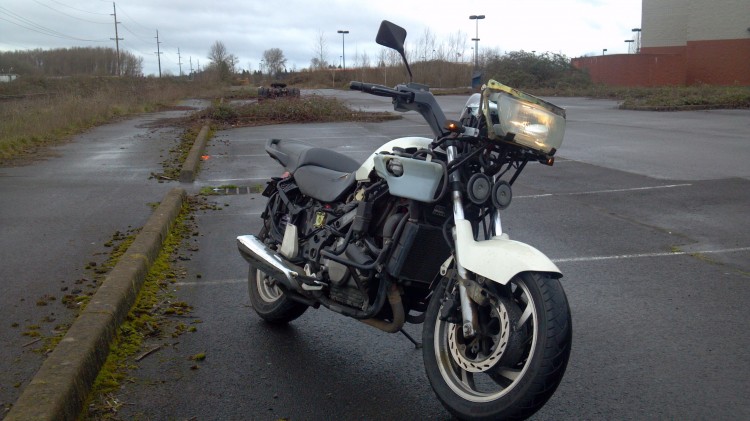
It definitely has a post-apocalyptic fell to it. I haven’t decided yet if I will try to find another set of plastics to recover the bike with or if I will leave it as-is and pass it on to the next owner once my fuel injection project is complete.
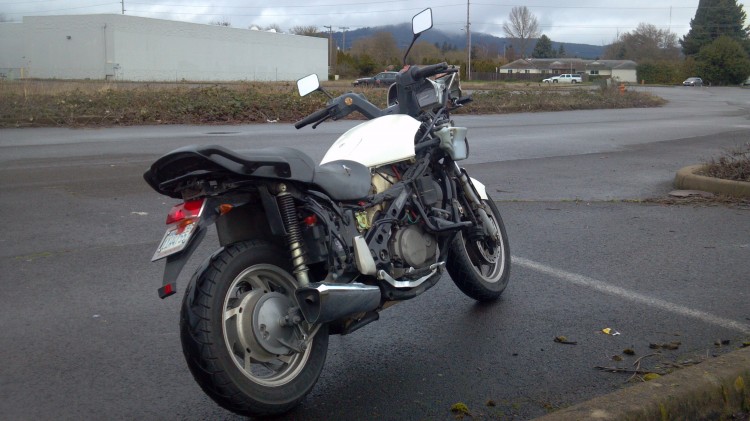

One final note: Heather has decided that this motorcycle should be called the HBM (Honey Badger Motorcycle) because it doesn’t care that it’s naked.

